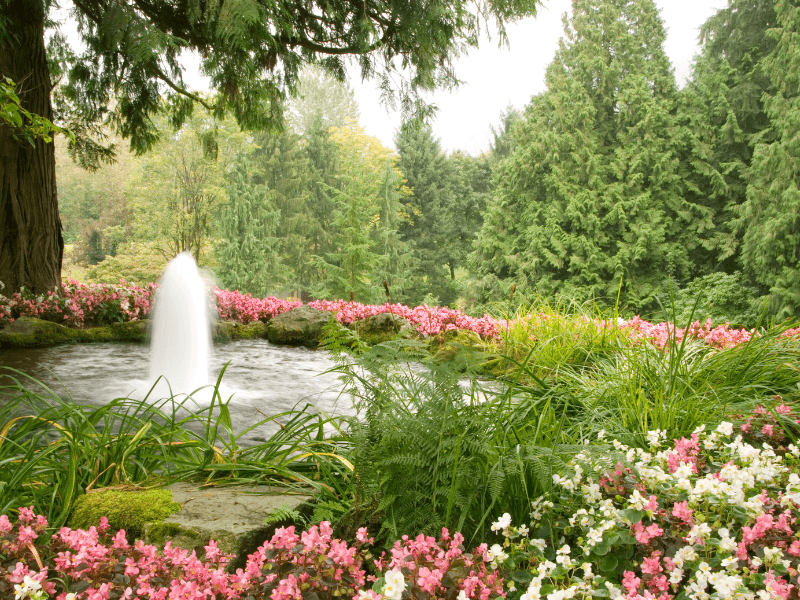Fountain pumps create a visually pleasing focal point. Fountains of water add a soothing sound to the garden, enhancing the relaxing atmosphere of the space. They are added to ponds for their aesthetic advantages and because they offer several practical advantages. They add oxygen to the water, which helps to create an ecological balance in the pond. This also helps maintain the wellbeing of fish or wildlife.
Advantages of adding a fountain
A fountain keeps the water moving, which helps prevent it from becoming stagnant. This is a condition that attracts mosquitoes (mosquitoes prefer to lay eggs in still water. Movement disrupts their breeding cycle.) and promotes algae growth. The splashing and movement of water introduces oxygen into the pond. This is crucial for healthy fish and other aquatic life. It is also beneficial for aerobic bacteria that help break down waste and control algae.
They aid in distributing oxygen, nutrients, and any treatments (like beneficial bacteria) more evenly across the pond. Algae thrives in still, nutrient-rich water. By circulating and oxygenating the water, a fountain helps reduce the conditions that encourage algae blooms.
In shallow ponds, moving water can help reduce surface water temperature. During hot weather this is especially important, promoting the mixing of warm with cooler lower layers.
Choosing a fountain pump
Before you choose a fountain pond pump for your pond, you will need to decide what size pump is needed. A submersible pond pump with a pump rate of around 1000 litres/hour is perfect for small garden fountains.
To install the fountain pump in a small pond or water feature, place it in the middle with the fountain jet directly above it. The pump needs to be raised up from the floor of the pond. This helps to reduce the amount of debris sucked in, and to ensure the fountain head is just clear of the water. You can use an upturned terracotta pot to raise the pump from the pond floor. Remember, though, to protect your pond liner when placing an object in the pond. If you are going to use an upturned terracotta pot, it may also be helpful to secure the pump to the pot so that it doesn’t topple over. Most pumps have a pre-filter supplied to prevent debris getting sucked in. This will need cleaning every so often.

The safest option is to have a proper outdoor power socket with an RCD fitted by a qualified electrician. A waterproof plug is then fitted to the pump. If the fountain is relatively close to the house, you can plug the pump into an indoor socket. First protect the cable by pushing it through plastic conduit, then fit a normal plug. If your house does not have RCD protection then buy a plug-in RCD.
Important tips to maintain pump
Clean the pump monthly (or more often in autumn) to prevent clogging from leaves or algae. Check for blockages in the nozzle and clear any buildup. If you use a UV clarifier, check the bulb yearly.
Visit Pond liners Online Blog for more pond related articles





